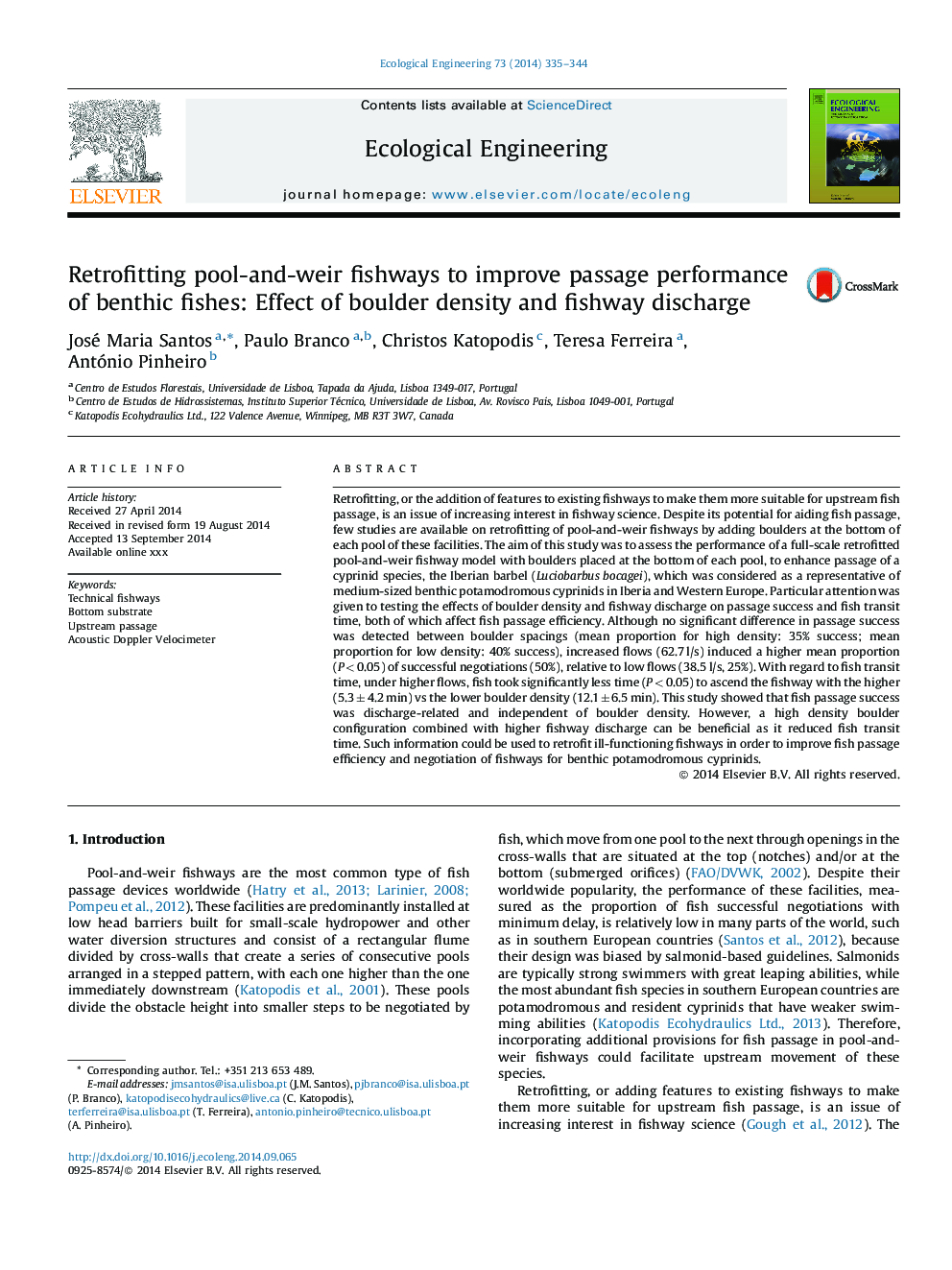| Article ID | Journal | Published Year | Pages | File Type |
|---|---|---|---|---|
| 6301943 | Ecological Engineering | 2014 | 10 Pages |
Abstract
Retrofitting, or the addition of features to existing fishways to make them more suitable for upstream fish passage, is an issue of increasing interest in fishway science. Despite its potential for aiding fish passage, few studies are available on retrofitting of pool-and-weir fishways by adding boulders at the bottom of each pool of these facilities. The aim of this study was to assess the performance of a full-scale retrofitted pool-and-weir fishway model with boulders placed at the bottom of each pool, to enhance passage of a cyprinid species, the Iberian barbel (Luciobarbus bocagei), which was considered as a representative of medium-sized benthic potamodromous cyprinids in Iberia and Western Europe. Particular attention was given to testing the effects of boulder density and fishway discharge on passage success and fish transit time, both of which affect fish passage efficiency. Although no significant difference in passage success was detected between boulder spacings (mean proportion for high density: 35% success; mean proportion for low density: 40% success), increased flows (62.7 l/s) induced a higher mean proportion (P < 0.05) of successful negotiations (50%), relative to low flows (38.5 l/s, 25%). With regard to fish transit time, under higher flows, fish took significantly less time (P < 0.05) to ascend the fishway with the higher (5.3 ± 4.2 min) vs the lower boulder density (12.1 ± 6.5 min). This study showed that fish passage success was discharge-related and independent of boulder density. However, a high density boulder configuration combined with higher fishway discharge can be beneficial as it reduced fish transit time. Such information could be used to retrofit ill-functioning fishways in order to improve fish passage efficiency and negotiation of fishways for benthic potamodromous cyprinids.
Keywords
Related Topics
Life Sciences
Agricultural and Biological Sciences
Ecology, Evolution, Behavior and Systematics
Authors
José Maria Santos, Paulo Branco, Christos Katopodis, Teresa Ferreira, António Pinheiro,
